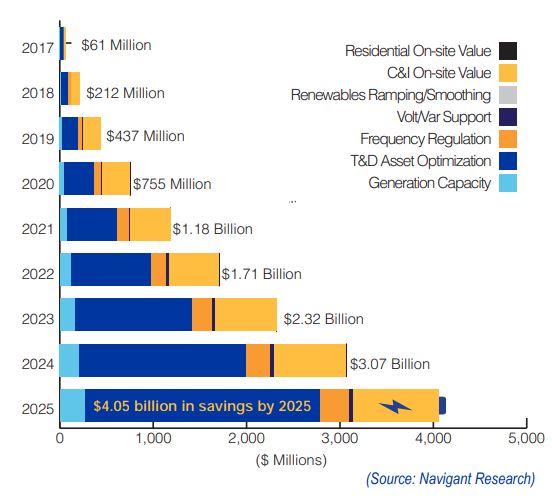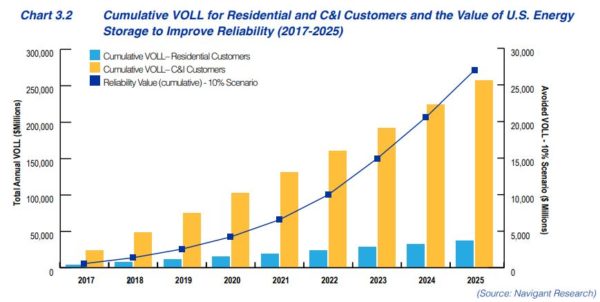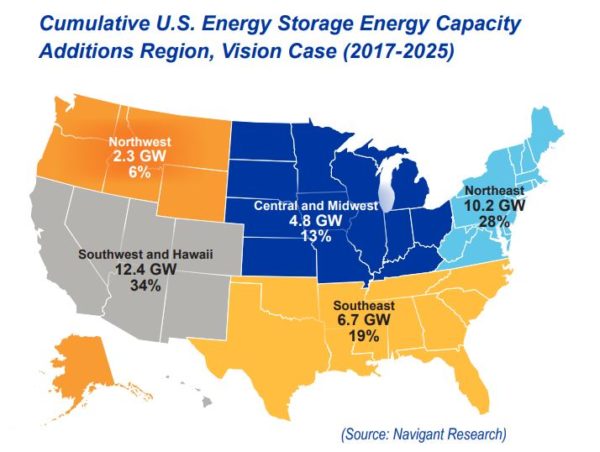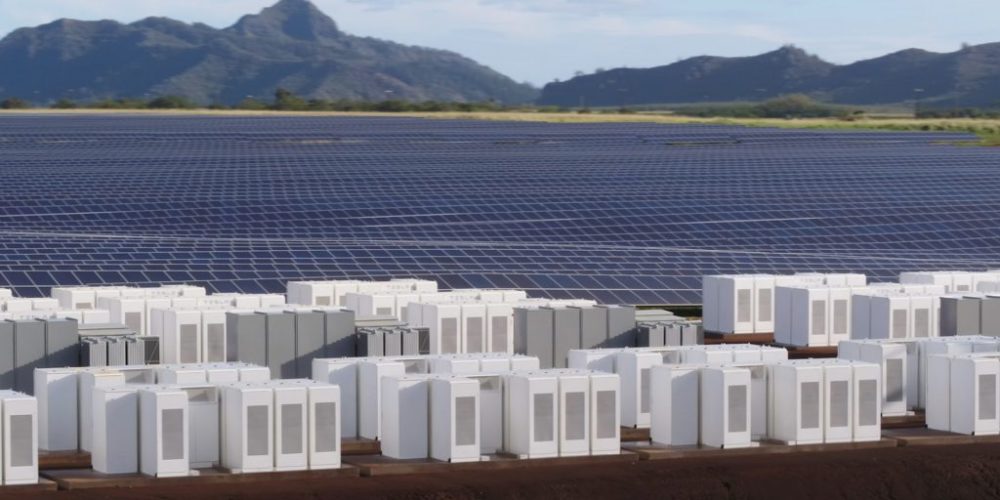Most of us are solar power professionals, for example we’re reading pv magazine. However, for those of us who haven’t already, it’s probably time to start paying attention to how energy storage will affect our business – because the largest players in our field have been modeling large scale energy storage projects for at least three years.
The Energy Storage Association (ESA) has been watching also – and they’ve articulated their thoughts in a white paper: 35X25: A Vision for Energy Storage. In this document, focused on the years between now and 2025, the ESA describes market drivers for growth, how to value energy storage, where and how it expects the growth to happen and what we have to continue to do in order to make this real.
(Editor’s note: In case you missed it, Energy Storage Association CEO Kelly Speakes-Backman, took time to talk with pv magazine while in Boston at the ESA’s 28th Energy Storage Conference & Expo)
The greatest driver of an evolution from one technology to the next is generally simple: money – and that’s where ESA starts. Using data collected by Navigant Research, the report breaks down over $4 billion in savings – starting at the residential level all the way through utility scale generation, and transmission and distribution.

ESA argues that as the United States continues to electrify parts of the energy system have been burning fossils directly, such as transportation, heating, and industrial processes, in addition to the broader expansion of electricity dependent technologies like data centers – we’re going to see ourselves become more dependent on the fine-tuned, near instant reaction times that only energy storage offers.
Fast responding energy storage addresses second-to-second fluctuations to match supply and demand without the need for inefficient fossil fuel power plants to wait on standby.
This is before we consider the benefits that energy storage offers in terms of reliability and resilience. One challenge yet to come is how exactly we are going to value, monetarily not just emotionally, the value of those two items. Watching the harrowing after effects of Hurricane Maria in Puerto Rico reminds us of our increasingly complex and dangerous world in these times of climate change, and how solar plus storage has a place in keeping society stable.
One way of attempting to price these challenges is via considering the Value of Lost Load (VOLL). The report suggests that between 2017 and 2025 the United States will see a cumulative loss of $295 billion!

Installing 35 GW of energy storage is estimated at $48.7 billion in costs. If this energy storage volume increases our reliability 10% – then we’ll save $29 billion, almost 60% of the cost of this hardware.
Adding another 70,000 jobs in the energy storage industry, plus significant CO2 savings and the question of economics is no longer a question. Soon we are going to wonder how we ever did without these tools.
As professionals, we of course need to know where the opportunities are – both regionally and in terms of sectors.
The headlines we see today regarding policy changes in California, New York, Massachusetts and New Jersey – are going to be the installations of tomorrow. however, the opportunities are everywhere. Each market has unique drivers, and storage will fit into different markets in different ways. In the Pacific Northwest with its large natural “batteries” of hydroelectricity power, energy storage will be used differently than in the wind capital Texas and the Plains States that need to manage a highly intermittent electricity source.

As is noted in our interview with Speakes-Backman, the key is to understand your individual state’s legal structure around energy storage, as every public utility commission has approached this problem a little bit differently.
The report ends with a call to action focused on the unique niches of our power industry. Using tools like procurement targets, mandates, incentive programs and Clean Energy Standards – based upon comprehensive financial and technical studies – is a starting point. However, it also takes regulatory refinement: rate design, updated modeling, interconnection standards and clear rules. This is because the electricity utilities need guidance as they update asset classification and expand resource planning to include energy storage.
Our electric grid is often called the largest machine in the world – specifically the Eastern and Midwest interconnected power grid. This machine touches every one of us. And residential customers have explicitly and overwhelmingly expressed a demand for energy storage in their homes. Meanwhile, the hard reality is that if we’re going to power our country with clean electricity from intermittent sources like the sun and wind – we’re going to need energy storage in massive amounts. The Energy Storage Association has given us a short term map to move towards this end-game.
This content is protected by copyright and may not be reused. If you want to cooperate with us and would like to reuse some of our content, please contact: editors@pv-magazine.com.








By submitting this form you agree to pv magazine using your data for the purposes of publishing your comment.
Your personal data will only be disclosed or otherwise transmitted to third parties for the purposes of spam filtering or if this is necessary for technical maintenance of the website. Any other transfer to third parties will not take place unless this is justified on the basis of applicable data protection regulations or if pv magazine is legally obliged to do so.
You may revoke this consent at any time with effect for the future, in which case your personal data will be deleted immediately. Otherwise, your data will be deleted if pv magazine has processed your request or the purpose of data storage is fulfilled.
Further information on data privacy can be found in our Data Protection Policy.